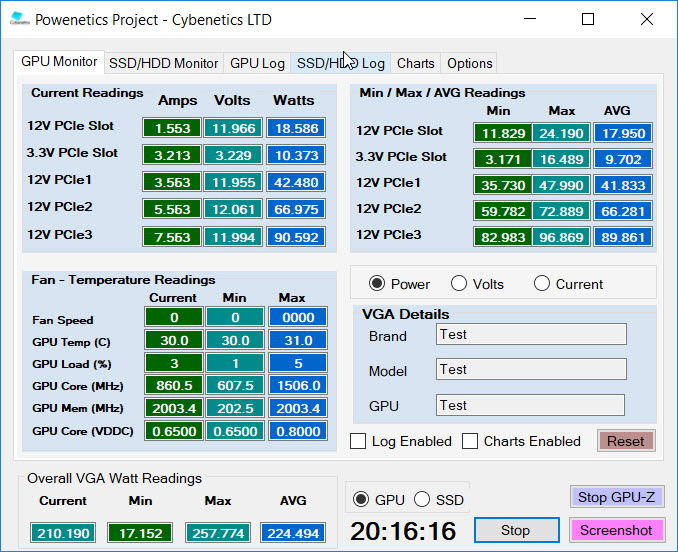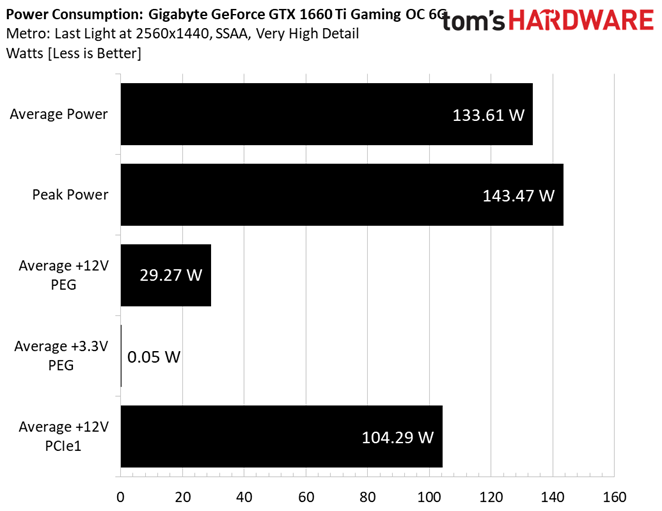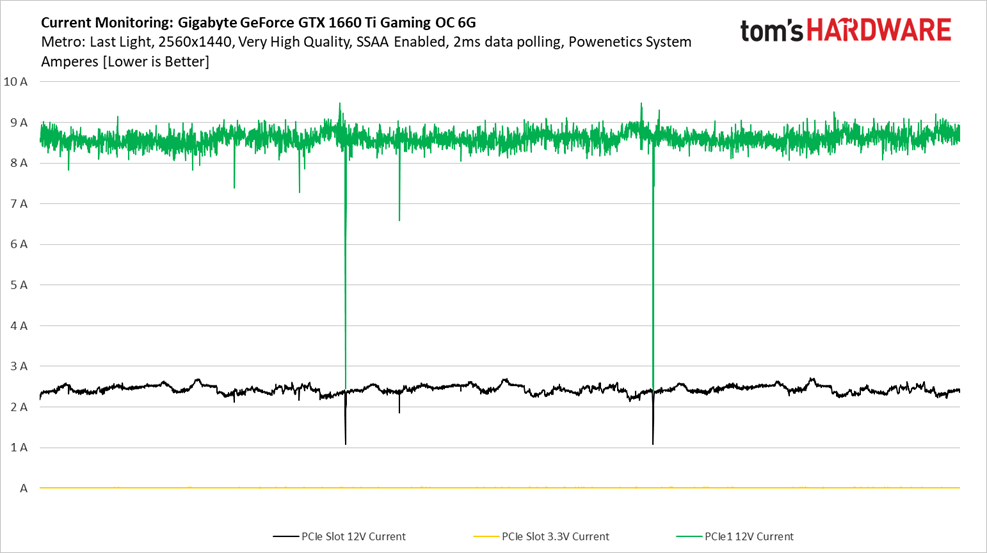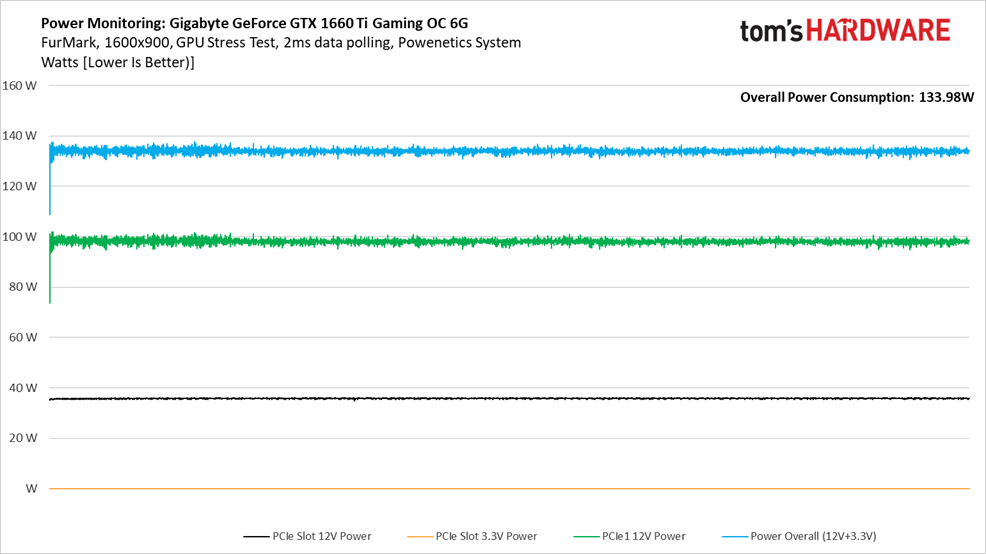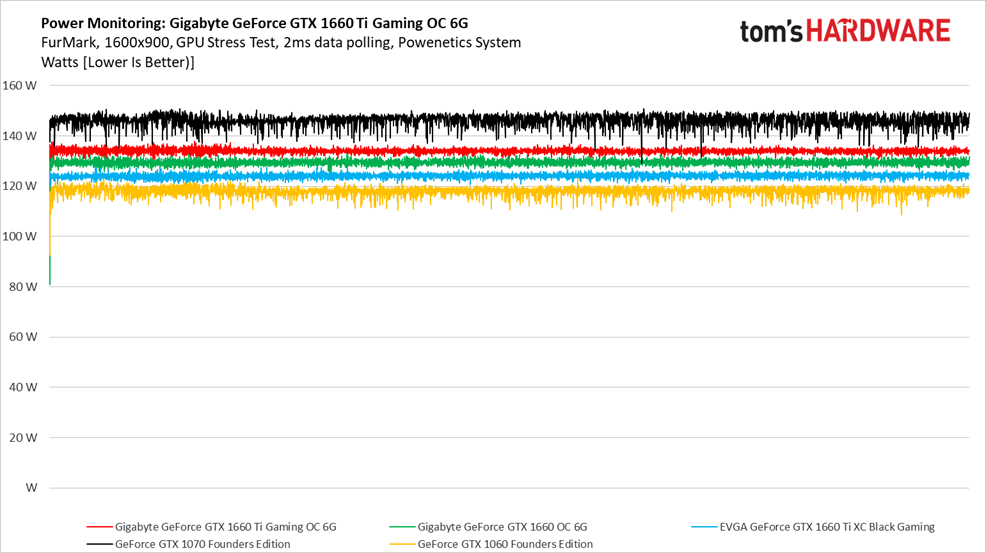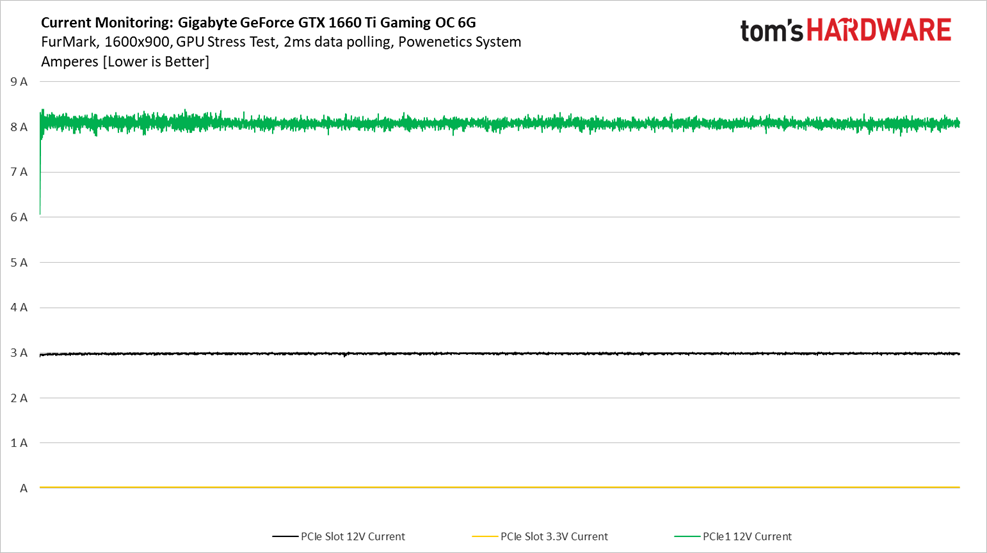Gigabyte GeForce GTX 1660 Ti Gaming OC 6G Review: Mid-Range Turing Goes Premium
Why you can trust Tom's Hardware
Power Consumption
Slowly but surely, we’re spinning up multiple Tom’s Hardware labs with Cybenetics’ Powenetics hardware/software solution for accurately measuring power consumption.
Powenetics, In Depth
For a closer look at our U.S. lab’s power consumption measurement platform, check out Powenetics: A Better Way To Measure Power Draw for CPUs, GPUs & Storage.
In brief, Powenetics utilizes Tinkerforge Master Bricks, to which Voltage/Current bricklets are attached. The bricklets are installed between the load and power supply, and they monitor consumption through each of the modified PSU’s auxiliary power connectors and through the PCIe slot by way of a PCIe riser. Custom software logs the readings, allowing us to dial in a sampling rate, pull that data into Excel, and very accurately chart everything from average power across a benchmark run to instantaneous spikes.
The software is set up to log the power consumption of graphics cards, storage devices, and CPUs. However, we’re only using the bricklets relevant to graphics card testing. Gigabyte's GeForce GTX 1660 Ti Gaming OC 6G gets all of its power from the PCIe slot and one eight-pin PCIe connector.
Idle
The overclocked GeForce GTX 1660 Ti Gaming OC 6G uses an extra 1W at idle compared to EVGA’s GeForce GTX 1660 Ti XC Black Gaming. Still, that’s a big improvement compared to when the Turing architecture first launched.
Gaming: Metro: Last Light
Gigabyte’s card uses about 9W more than EVGA’s base-level GeForce GTX 1660 Ti through three runs of the Metro: Last Light benchmark. It also peaks nearly 12W higher.
Get Tom's Hardware's best news and in-depth reviews, straight to your inbox.
Both companies use the PCI Express slot sparingly, opting instead to utilize the eight-pin auxiliary connector most heavily.
Charting power consumption across our three-run benchmark shows the narrow range we’re working with. For the most part, GeForce GTX 1660 Ti behaves itself, though Gigabyte’s flagship 1660 Ti demonstrates power dips and spikes more often than EVGA’s 1660 Ti XC Black Gaming.
GeForce GTX 1660 Ti uses slightly more power than GeForce GTX 1060 Founders Edition, despite their similar board power ratings. Meanwhile, GeForce GTX 1070, which is the closer performance match, hovers around 150W.
We also see the difference between Gigabyte’s 1660 Ti (red) and EVGA’s (blue). A higher power limit facilitates better performance, but simultaneously dissipates more heat.
Current draw over the PCIe slot varies a bit between 2A and 3A. However, the instantaneous dips and spikes are fairly small. In comparison, GeForce RTX 2060 pulls closer to 5A from its 16-lane slot, demonstrating a much straighter line across our three-loop Metro benchmark.
There’s quite a bit more noise through the eight-pin connector’s line. Average draw on that rail lands between 8A and 9A.
FurMark
FurMark is a steadier workload, resulting in less variation across our test run. Average power is almost identical, while less room for dramatic swings brings the peak reading down to about 138W.
There’s no room for performance to vary in FurMark, so the wavy line chart we saw under Metro: Last Light is gone, replaced by much more consistent power consumption through 15 minutes of recording.
As a result of an aggressive GPU Boost rating, Gigabyte’s GeForce GTX 1660 Ti Gaming OC 6G uses more power than any other card in our comparison, except for the 1070 Founders Edition. But because the Gigabyte card is also generally faster than the 1070, GeForce GTX 1660 Ti reasserts itself as the more efficient solution.
MORE: Best Graphics Cards
MORE: Desktop GPU Performance Hierarchy Table
MORE: All Graphics Content
Current page: Power Consumption
Prev Page Gaming at 2560 x 1440 Next Page Temperatures, Fan Speeds and Clock Rates